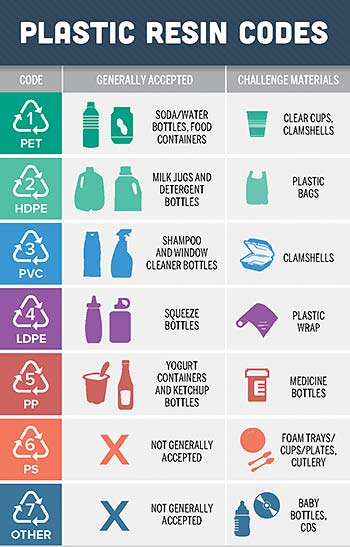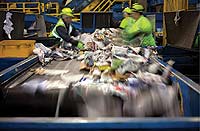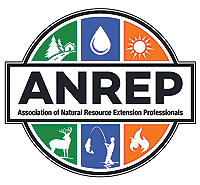|
|
SUSTAINABILITY HAPPENINGS April 2021
|
Removing the Rose-Colored Glasses on Recycling
Jessica Thacker, Program Manager, Solid Waste Special Service District #1, Moab, UTah |
 |
| Plastic Resin identification Coding System via Recycle.com |
The complex world of recycling is constantly evolving with new methods of reclamation, expanded product alternatives, and changes in supply chain product manufacturing. However, not all recycling is created equal. Sometimes a refresher in recycling basics and etiquette is helpful and safeguards against misconceptions and myths. Some recycling actions have larger impacts than others, but that’s not to say certain forms of recycling are better than others. The process of recycling should be straightforward and is a staple of responsible environmentalism; however, recycling has become increasingly complicated. By educating yourself and others, you can become an effective recycling ambassador for your local community.
Misconceptions & Myths #1: Confusing Symbols & Deceptive Packaging
Recycling symbology can often be misleading, confusing, and even downright fraudulent. Without proper education and transparency in the recycling process, a recycling symbol can do more harm than good. Did you know the recycling symbol (known as the three arrows chasing each other) is called the “Mobius Loop”? The Mobius Loop indicates the item is capable of being recycled, but oftentimes only indicates the type of plastic and does not necessarily suggest that the item itself is made of recycled materials or will be accepted in a recycling collection program. The appearance of this symbol alone can beg the question, “Why can’t it be recycled?” and this is a question that has plagued advocates of recycling for years. Unfortunately, the full answer is complex and leads to more questions.
Sometimes inside of the Mobius Loop, a number can be found, specifically on plastic bottles and containers. This number indicates the “RIC” or more formally known as the International Resin Identification Coding System. The RIC, numbered 1 thru 7, identifies the combination of chemicals within that plastic. There are approximately 40,000 types of plastic in existence that have been broadly condensed into these seven categories, which means the methods of recycling are enormously complex.
Manufacturers can also be guilty of “greenwashing” their products. Greenwashing is including terms such as Earth friendly, free range, and all-natural to bolster the perceived environmental benefits and recyclability of a product. While these labels do sometimes associate with some form of environmental protection, oftentimes these broad claims are misleading, meaningless, and merely a carefully crafted marketing scheme meant to attract more consumers.
 |
| Getty Images via Canva |
Misconceptions & Myths #2: Wishcycling
Wishcycling is the process of adding an item to your recycling bin without knowing if the item is actually recyclable. Wishcycling leads to a wide array of problems and is an environmental crisis in and of itself. By tossing items that are not accepted in your local recycling collection program, recyclable contamination via unacceptable materials (such as plastic bags and paper coffee cups) can lead to conveyor belt failure, higher labor costs, potential damage to equipment not meant to handle these materials, and has the potential to eliminate both the financial and recovery values of collected recyclables. In short, placing non-recyclable materials into the system leads to additional economic and environmental costs, with no benefits and less actual recycling.
Wishcycling is relatively easy to avoid. Consumers can consider the methods of reduce and reuse, specifically selecting products that are available without plastic or paper packaging or held in higher value packaging such as glass or metal. Recyclers can also make sure their items are free of liquids, food waste, and are acceptable in their local recycling programs. Follow the mantra to avoid the many pitfalls of wishcycling: when in doubt, throw it out.
Misconceptions & Myths #3: The True Financial Value of Recycling
Unfortunately, the economics to support the mindset that recycling is inherently profitable currently don’t exist. While this is discouraging news, it shouldn’t persuade manufacturers and businesses to shy away from offering environmentally sound products and associated packaging. Research continues to find ways to make recycling business models more economically feasible and profitable. However, it’s not all bad news. The introduction of recycling collection systems can provide economic, financial, and environmental benefits by creating jobs, keeping money local, reducing the need to extract raw resources and cutting carbon emissions. Advancing recycling and sustainability programs, with local recycling markets identified, keeps the economy domestic. For example, glass collected at the Community Recycle Center is delivered to manufacturers in Salt Lake City, Utah. This collected material can then be reclaimed by bottling companies or blown into fiberglass insulation.
 Be an Effective Recycling Ambassador Be an Effective Recycling Ambassador
By no means are these misconceptions and myths the only issues encountered in today’s increasingly complex recycling and sustainability efforts, but they are certainly among the most common. By investigating the true recyclability of the products you purchase, avoiding the harmful actions of wishcycling, and recognizing that recycling efforts still have a long way to economic practicality, you can break the “Mobius Loop” of misinformation.
|
|
April Celebrates Earth Day
by Roslynn Brain McCann, Sustainable Communities Extension Specialist |
 April is the host month for Earth Day. In Utah, one of the best ways we can help our environment is by turning away from our cars as a primary mode of transit. Utah’s winter inversions trap pollutants and contribute to a laundry list of health hazards ranging from asthma to decreased life expectancy. Reducing motorized vehicle emissions by engaging in alternative modes of transportation (biking/walking/busing/carpooling) can improve health and quality of life in our state. April is the host month for Earth Day. In Utah, one of the best ways we can help our environment is by turning away from our cars as a primary mode of transit. Utah’s winter inversions trap pollutants and contribute to a laundry list of health hazards ranging from asthma to decreased life expectancy. Reducing motorized vehicle emissions by engaging in alternative modes of transportation (biking/walking/busing/carpooling) can improve health and quality of life in our state.
Let’s focus on biking as a primary mode of transportation. A bicycle costs $50-200 to maintain annually if ridden 2,000 annual miles, averaging 5-15¢ per mile. Vehicles, however, cost (gas, maintenance and tires) approximately 19.64 cents per mile. With an average total daily driving distance in the U.S. of 29 miles, or just over 50 minutes behind the wheel, this works out to $2,078.89 to operate a vehicle each year; more than 40 times more expensive than a bicycle. Note that this estimate does not include cost of the vehicle itself, nor insurance.
Transportation accounts for 27% of our nation’s total greenhouse gas emissions. This is the second highest source of greenhouse gas emissions in the nation. Cycling to school and/or work every day can be viewed as one’s personal contribution to combating these statistics by reducing greenhouse gas emissions and consuming less nonrenewable resources. Each gallon of gasoline in our cars emits 8,887 grams (almost 20 pounds of CO2) into the atmosphere, whereas riding a bicycle produces none aside from our breath (note that you still breath while driving!).
When you arrive at your destination on a bicycle, it is likely that you will be feeling energized with a joyful, more positive perspective. Also, bicycling allows for an intimate connection with your community and surrounding natural environment, where you can directly see, hear, feel, smell, and even taste the environment around you. Riding a bike offers the following health benefits: Increased...
• Cardiovascular fitness
• Strength
• Balance and flexibility
• Endurance and stamina
• Calories burned
• Cognition
• Energy
Overcoming Common Barriers:
Bad Weather
Installing fenders on your bicycle is a great way to protect against rain and slush, and appropriate clothing choices can carry you through the seasons. Also, you can purchase special bike tires for winter if you are concerned about snow and ice.
Sweat
No one likes to arrive at his or her destination sweaty. To combat this, wear appropriate clothing, bring a “work shirt” to change into, stay hydrated, walk your bike up steep hills, and bike slower if possible.
Safety
When cycling, best practices include: Wearing a helmet, signaling with your arm when turning or changing lanes, not riding on sidewalks, stopping for red lights and stop signs, rolling your right pant leg up so it doesn’t get caught in or dirtied by the chain, biking on the right-hand side of your lane and occupying a lane at a red light or stop sign. Keep in mind that bicycles are considered vehicles, so check local and state policy and laws to learn the rules of the road.
Committing to biking as your primary mode of transportation is one way to make every day Earth Day!
This information was adapted from Roslynn McCann’s USU Extension fact sheet: Biking as an Alternative Mode of Transportation. |
|
|
|
|
|
© 2002-2024 Moab Happenings. All rights
reserved.
Reproduction of information contained in this site is
expressly prohibited.
|
|


 Be an Effective Recycling Ambassador
Be an Effective Recycling Ambassador April is the host month for Earth Day. In Utah, one of the best ways we can help our environment is by turning away from our cars as a primary mode of transit. Utah’s winter inversions trap pollutants and contribute to a laundry list of health hazards ranging from asthma to decreased life expectancy. Reducing motorized vehicle emissions by engaging in alternative modes of transportation (biking/walking/busing/carpooling) can improve health and quality of life in our state.
April is the host month for Earth Day. In Utah, one of the best ways we can help our environment is by turning away from our cars as a primary mode of transit. Utah’s winter inversions trap pollutants and contribute to a laundry list of health hazards ranging from asthma to decreased life expectancy. Reducing motorized vehicle emissions by engaging in alternative modes of transportation (biking/walking/busing/carpooling) can improve health and quality of life in our state.
